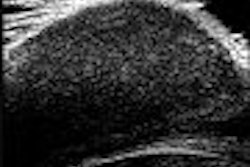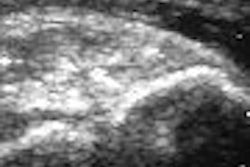Left atrial (LA) size provides independent and incremental value over standard risk factors such as left ventricular systolic dysfunction and ischemia in patients referred for stress echocardiography exams, according to a new study in the Journal of the American College of Cardiology.
"Left atrial size is a powerful prognosticator and should be routinely used in the prognostic interpretation of stress echocardiography," wrote a research team led by Dr. Sripal Bangalore of St. Luke's-Roosevelt Hospital and Columbia University in New York City (JACC, September 25, 2007; Vol. 50:13, pp. 1254-1262).
To evaluate the role of LA size as a risk factor for cardiovascular events, as well as the prognostic impact of LA size in risk stratification and prognosis for patients during stress echocardiography, the researchers identified 3,260 consecutive patients undergoing the exam. Of these patients, 555 were excluded from the study due to acute myocardial infarction, hemodynamically significant valvular abnormalities, hemodynamic instability, poor acoustic windows, pregnancy, and inability to give informed consent.
Prospective follow-up for future cardiac events was obtained in all patients. Stress echo exams were performed using either a Sequoia (Siemens Medical Solutions, Malvern, PA) or Sonos 5500 scanner (Philips Medical Systems, Andover, MA). Enlarged LA was defined as a size indexed to body surface area 2.4 cm/m² or greater.
Of the 2,705 patients included in the study, 2,061 had a normal LA size and 644 (24%) had a dilated LA on the basis of LA size. Patients were followed for up to five years (mean of 2.7 years) for nonfatal myocardial infarction (54 patients) or cardiac death (68 patients).
The researchers found that LA size was a significant, univariate predictor of cardiovascular events. The risk of cardiovascular events increased by 3.15 times for each 10 mm/m² increase in LA size.
In addition, the relationship between indexed LA size and cardiovascular events followed an exponential curve, with a very high correlation (r = 0.98, p < 0.0001) and an exponential increase in event rate beyond an indexed LA size of 2.4 cm/m². This cutoff size effectively risk-stratified patients into a normal and abnormal group, according to the researchers.
"Patients with dilated LA (indexed) had a 2.9 times higher event rate compared with patients with normal LA," they wrote.
The presence of a dilated LA was able to further risk-stratify both the normal and abnormal stress echo cohorts, according to the authors. A normal stress echo exam in the setting of a dilated LA (indexed) was associated with a 2.3 times higher risk of a cardiac event when compared with patients with a normal exam and normal LA size. In addition, a dilated LA (indexed) with an abnormal stress echo exam portended a very high risk for cardiac events (adjusted relative risk of 7.02).
"A normal stress echocardiography in the setting of a normal LA size portends a benign diagnosis (< 1% event rate/year)," the authors wrote. "However, in the setting of a dilated LA, normal stress echocardiography is prognostically less benign, whereas an abnormal stress echocardiogram is prognostically more malignant. Left atrial size provides independent and incremental prognostic value, independent of traditional risk factors, echocardiographic myocardial ischemia, and LV (left ventricle) ejection fraction."
Left atrial size should be routinely incorporated in prognostic interpretation of stress testing, the authors concluded.
"Further studies using LA volumes are needed to elucidate the role of diastolic dysfunction in patients undergoing stress echocardiography and to further evolve the concept of 'diastolic stress echocardiography,' " they wrote.
By Erik L. Ridley
AuntMinnie.com staff writers
September 26, 2007
Related Reading
ASE unveils new stress echo guidelines, September 7, 2007
Giant virtual reality chamber boosts 3D echo accuracy, August 2, 2007
3D echo effective in aortic stenosis appraisal, July 3, 2007
Myocardial echocardiography confirms coronary syndromes, June 29, 2007
Three-dimensional echocardiography useful for coronary artery disease diagnosis, June 5, 2007
Copyright © 2007 AuntMinnie.com




















